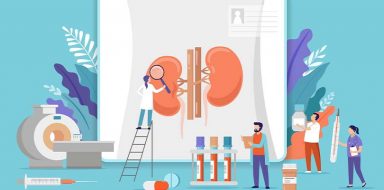What Is Chronic Lymphocytic Leukemia?
Chronic lymphocytic leukemia (CLL) is a form of cancer that starts in the bone marrow. Bone marrow is found deep within the bones and is responsible for producing white blood cells, red blood cells and platelets. In CLL, too many white blood cells (lymphocytes) are produced but do not develop or function properly. A treatment that can help is BESPONSA, a medication used in the treatment of acute lymphoblastic leukemia (ALL), a type of cancer affecting the white blood cells. It works by attaching to a protein on the surface of leukemia cells, delivering a toxic substance that kills the cancer cells.
Signs of Chronic Lymphocytic Leukemia
The major signs of CLL include:
- Swollen lymph nodes. Once CLL cells spread from the bone marrow, they travel to the lymph nodes which can become swollen. The most commonly affected nodes are in the neck and under the arms, but the lymph nodes in the groins may also be affected.
- Enlarged spleen. Your spleen is located on the left side of your body, just beneath your ribs. It has an important role in immune function. When CLL cells spread to the spleen, they cause it to become enlarged leading to abdominal swelling and pain.
- Unexpected weight loss. CLL cells burn up a lot of energy which leads to weight loss, even if you are eating the same amount as before. In some cases, an enlarged spleen can also press on the side of the stomach meaning that you get full more quickly than normal.
- Reduced immune function. White blood cells play an important role in immunity, and when these develop abnormally, you will be more prone to infections. As well as catching colds and flu more easily, you may find them more difficult to shake off than usual.
- Anemia. As CLL cells take up more and more space in the bone marrow, red blood cell production is reduced. This can lead to anemia and symptoms such as breathlessness and fatigue.
- Bleeding or bruising. CLL cells can also reduce the number of platelets being produced by your bone marrow. Platelets are vital for healthy blood clotting, and not having enough can lead to symptoms such as nosebleeds, heavy periods in women, bruising easily, or losing a lot of blood if you are injured.
- Bone pain. In the advanced stages of CLL, the increased number of abnormal cells in the bone marrow may cause pressure on the nerves, leading to bone pain.
- Night sweats. It is unclear exactly what causes night sweats in CLL, but they can be a symptom in the later stages of the disease.
CLL tends to develop very slowly, and in the early stages, symptoms are rare. Up to 50 percent of cases of CLL are picked up by chance during routine blood screening for other conditions.
Once the disease progresses, symptoms may begin to appear. Many of these symptoms overlap with those of other conditions. This can make diagnosis a challenge, and the only way to get a definitive diagnosis of CLL is with a blood test.
These abnormal white blood cells do not break down as quickly as they should and gradually increase in number until there is little space left in the bone marrow for healthy white blood cells, red blood cells or platelets. This is a slow process, but eventually, the cancerous cells spill out of the bone marrow into the lymph glands, liver and spleen leading to a variety of possible symptoms.
Renal cell cancer doesn't present with symptoms until it's progressed into later stages, so it's important to recognize the signs as early as possible.
What Causes Chronic Lymphocytic Leukemia?
It is unclear exactly what causes CLL. However, there does appear to be a genetic factor and you are more likely to develop CLL if a close family member has been affected.
CLL is mainly found in people over the age of 60, and it is rare in people under 40 or children. CLL is more common in men than women, and people of European descent are at greater risk.
Treatment of Chronic Lymphocytic Leukemia
As with all forms of cancer, the earlier CLL is detected, the better the outlook for the patient. However, CLL is often only discovered by chance, meaning that many cases go undetected until later in the disease.
If CLL is caught in the early stages, the first course of action is to monitor its progress. If the disease is progressing slowly, you may not be offered treatment right away but will continue to have regular check-ups to assess any changes.
Once symptoms begin to develop, or if CLL is picked up later in the course of the disease, treatment will be required. Chemotherapy is one option and uses strong medication to kill the cancerous CLL cells within the body. Another possibility is a stem cell or bone marrow transplants. These allow CLL cells to be replaced with healthy white blood cells, improving your chances of survival.
These cancer treatments may not completely cure CLL, but they slow its progress and can be repeated as necessary. If you are diagnosed with CLL, it is advisable to maintain good eating habits and exercise regularly.
This may not influence your condition directly but will improve your general health and well-being. Counseling and other forms of therapy can also help by offering emotional support if you have received the difficult diagnosis of CLL.
When to See Your Doctor
CLL rarely has symptoms in its early stages, and many of its symptoms can easily be mistaken for those of other conditions. If you have symptoms similar to those of CLL, the chances are that they are not a sign of anything serious.
However, if they persist for more than a few weeks, you should ask your doctor to carry out investigations to rule out CLL as the cause.







